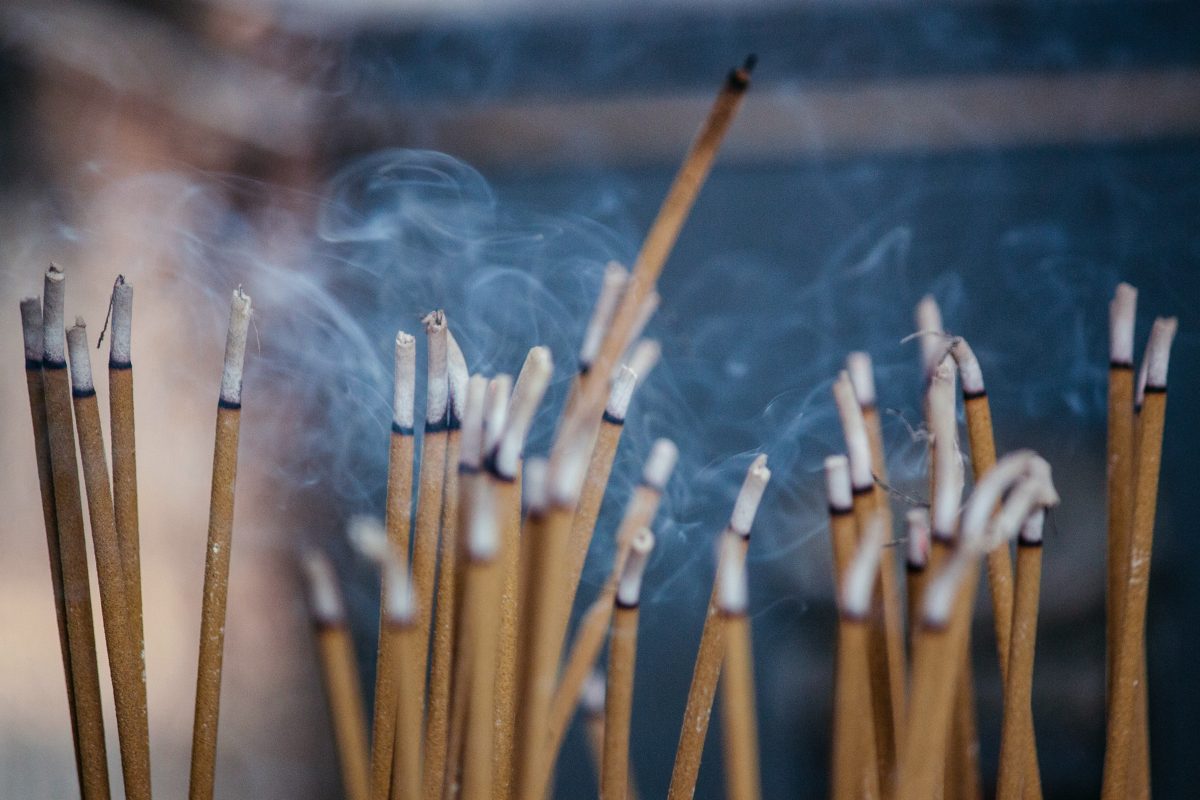Encens
About the Incense Sticks
Know about your Incense Sticks

Incense Sticks: Enhancing Atmosphere and Well-being
Incense sticks have been used for centuries to create an aromatic ambiance and enhance well-being. Their captivating fragrances and soothing properties have made them a popular choice for various cultural, spiritual, and relaxation practices. In this article, we will delve into the world of incense sticks, exploring their history, benefits, usage, and tips for choosing the right ones.
Table of Contents
- Introduction
- What are Incense Sticks?
- History and Cultural Significance of Incense Sticks
- Types of Incense Sticks
- Natural Incense Sticks
- Synthetic Incense Sticks
- Benefits of Using Incense Sticks
- Aromatherapy and Relaxation
- Spiritual and Meditation Practices
- Stress Relief and Mood Enhancement
- How to Choose the Right Incense Sticks
- Fragrance Selection
- Quality and Ingredients
- Different Uses of Incense Sticks
- Home Fragrance
- Spiritual and Ritualistic Practices
- Yoga and Meditation
- Steps for Burning Incense Sticks
- Preparing the Incense Holder
- Lighting the Incense Stick
- Placing the Incense Stick
- Safety Precautions
- Caring for Incense Sticks
- Proper Storage
- Shelf Life and Expiration
- Conclusion
- FAQs
Introduction
Humans have long been fascinated by scents and their ability to evoke emotions, memories, and create a pleasant atmosphere. Incense sticks, also known as agarbattis, joss sticks, or prayer sticks, are slender sticks infused with aromatic materials that release fragrant smoke when burned. These sticks have been an integral part of religious ceremonies, meditation practices, and everyday life in many cultures across the globe.
What are Incense Sticks?
Incense sticks are composed of a combustible material, usually a thin wooden stick, coated with a mixture of aromatic ingredients such as powdered herbs, resins, gums, and essential oils. When ignited, the flame consumes the coated portion of the stick, releasing fragrant smoke that fills the surrounding space with a delightful aroma.
History and Cultural Significance of Incense Sticks
The use of incense sticks dates back thousands of years. Ancient civilizations, including the Egyptians, Greeks, Romans, and Chinese, utilized incense for various purposes. In Egypt, incense was burned during religious rituals and as an offering to the gods. The Greeks and Romans used incense in their temples and homes to honor their deities and purify the air. In traditional Chinese culture, incense has played a significant role in religious ceremonies, meditation, and promoting harmony.
Types of Incense Sticks
Incense sticks can be broadly classified into two categories: natural incense sticks and synthetic incense sticks.
- Natural Incense Sticks: Natural incense sticks are made from plant-based materials, including aromatic woods, herbs, flowers, and resins. These sticks are highly regarded for their pure and authentic fragrances, often derived from natural essential oils. Sandalwood, lavender, jasmine, and patchouli are popular choices for natural incense sticks.
- Synthetic Incense Sticks: Synthetic incense sticks are manufactured using synthetic fragrances and binding agents. They mimic the scents of natural ingredients but are not derived from botanical sources. Synthetic incense sticks offer a wide range of fragrances and are often more affordable than their natural counterparts.
Benefits of Using Incense Sticks
The use of incense sticks offers several benefits for both the mind and body. Let’s explore some of the key advantages:
- Aromatherapy and Relaxation: The pleasant aroma released by incense sticks can have a calming effect on the mind and body. Aromatherapy practices involving incense sticks can help reduce stress, promote relaxation, and enhance overall well-being.
- Spiritual and Meditation Practices: Incense sticks have been used in spiritual and religious ceremonies for centuries. The fragrant smoke is believed to purify the environment, create a sacred atmosphere, and aid in concentration during meditation or prayer.
- Stress Relief and Mood Enhancement: Certain scents have the power to uplift mood, reduce anxiety, and alleviate stress. Burning incense sticks with fragrances like lavender, citrus, or frankincense can help create a soothing environment and promote emotional well-being.
How to Choose the Right Incense Sticks
Selecting the right incense sticks can enhance your experience and ensure you enjoy their benefits fully. Consider the following factors when making your choice:
- Fragrance Selection: Different fragrances have distinct effects on the mind and body. Choose scents that align with your preferences and the ambiance you wish to create. Floral scents like rose or jasmine are often associated with relaxation, while earthy scents like sandalwood can aid in grounding and meditation.
- Quality and Ingredients: Opt for high-quality incense sticks made from natural ingredients. Check for information on the packaging or from trusted sources to ensure they are free from harmful chemicals or synthetic additives.
Different Uses of Incense Sticks
Incense sticks have a wide range of applications beyond their aromatic properties. Let’s explore a few popular uses:
- Home Fragrance: Burning incense sticks can freshen the air, mask unpleasant odors, and create a welcoming atmosphere in your home or workspace. Whether you’re hosting guests or simply relaxing after a long day, the soothing fragrance can transform the ambiance.
- Spiritual and Ritualistic Practices: Incense sticks play a vital role in religious ceremonies and rituals worldwide. They are often used to purify spaces, honor deities, and facilitate spiritual connections. The fragrant smoke is believed to carry prayers and intentions to the divine realm.
- Yoga and Meditation: Many practitioners incorporate incense sticks into their yoga and meditation routines. The calming aroma helps set the mood, promote focus, and deepen the meditative experience.
Steps for Burning Incense Sticks
To make the most of your incense sticks, follow these simple steps for a safe and enjoyable burning experience:
- Preparing the Incense Holder: Place your incense stick in a suitable holder or burner. Ensure it is heat-resistant and stable to avoid any accidents.
- Lighting the Incense Stick: Light the tip of the incense stick using a match or lighter. Allow the flame to burn for a few seconds before gently blowing it out.
- Placing the Incense Stick: Once the flame is extinguished, place the lit end of the incense stick securely in the holder. Ensure it stands upright and remains steady throughout the burning process.
- Safety Precautions: Never leave a burning incense stick unattended. Keep them away from flammable objects, curious children, and pets. Ensure proper ventilation to avoid excessive smoke accumulation.
Caring for Incense Sticks
Proper care and storage of your incense sticks can help maintain their quality and prolong their shelf life:
- Proper Storage: Store your incense sticks in a cool, dry place away from direct sunlight and moisture. This will prevent them from absorbing excess humidity, which can affect their aroma and burn quality.
- Shelf Life and Expiration: Like any organic material, incense sticks have a limited shelf life. Check the packaging for the recommended usage period. Expired incense sticks may lose their potency and fragrance, so it’s best to replace them when they reach their expiration date.
Conclusion
Incense sticks have stood the test of time as a versatile tool for creating ambiance, promoting relaxation, and enhancing spiritual practices. Whether you’re seeking stress relief, a fragrant home, or a serene meditation space, incense sticks can be a valuable addition to your lifestyle. Choose your favorite scents mindfully, follow proper burning techniques, and enjoy the therapeutic benefits they offer.
FAQs
Q1. Can incense sticks be harmful to health? Incense sticks, when used in well-ventilated areas and in moderation, are generally safe. However, individuals with respiratory conditions or sensitivities may experience discomfort from the smoke. It’s advisable to use them in a well-ventilated space or consider alternatives like essential oil diffusers.
Q2. How long does an incense stick burn? The burning time of an incense stick varies depending on its length and thickness. On average, a standard incense stick burns for about 30 minutes to an hour.
Q3. Can incense sticks help with sleep? Certain fragrances, such as lavender or chamomile, are known for their calming properties and may aid in relaxation and better sleep. Burning incense sticks with these scents before bedtime can create a soothing atmosphere conducive to sleep.
Q4. Can incense sticks attract insects? Some insects, particularly mosquitoes, may be deterred by certain incense fragrances. However, it’s not a guaranteed method for repelling all types of insects. If insect control is your primary concern, it’s advisable to use appropriate repellents or protective measures.
Q5. Can I mix different incense stick fragrances? Yes, you can experiment with blending different fragrances to create a unique aroma. However, ensure the scents complement each other to avoid an overpowering or unpleasant combination.



